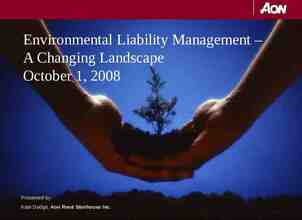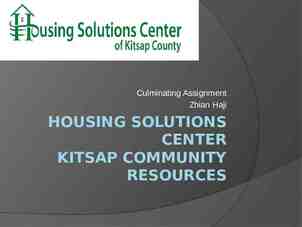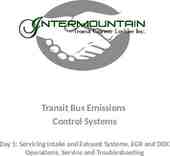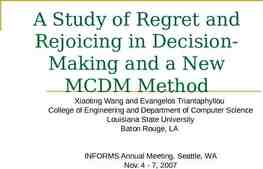CHAPTER 3 INFORMATION SYSTEMS, ORGANIZATIONS, AND STRATEGY 1
43 Slides2.19 MB
CHAPTER 3 INFORMATION SYSTEMS, ORGANIZATIONS, AND STRATEGY 1
2
3.1. Organization and Information Systems 3
Management Information Systems CHAPTER 3: INFORMATION SYSTEMS, ORGANIZATIONS, AND STRATEGY Organizations and Information Systems Information technology and organizations influence one another – Complex relationship influenced by organization’s Structure Business processes Politics Culture Environment, and Management decisions 4
Management Information Systems CHAPTER 3: INFORMATION SYSTEMS, ORGANIZATIONS, AND STRATEGY Organizations and Information Systems THE TWO-WAY RELATIONSHIP BETWEEN ORGANIZATIONS AND INFORMATION TECHNOLOGY This complex two-way relationship is mediated by many factors, not the least of which are the decisions made —or not made—by managers. Other factors mediating the relationship include the organizational culture, structure, politics, business processes, and environment. FIGURE 3-1 5
Management Information Systems CHAPTER 3: INFORMATION SYSTEMS, ORGANIZATIONS, AND STRATEGY Organizations and Information Systems What is an organization? – Technical definition: Stable, formal social structure that takes resources from environment and processes them to produce outputs A formal legal entity with internal rules and procedures, as well as a social structure – Behavioral definition: A collection of rights, privileges, obligations, and responsibilities that is delicately balanced over a period of time through conflict and conflict resolution 6
Management Information Systems CHAPTER 3: INFORMATION SYSTEMS, ORGANIZATIONS, AND STRATEGY Organizations and Information Systems THE TECHNICAL MICROECONOMIC DEFINITION OF THE ORGANIZATION FIGURE 3-2 In the microeconomic definition of organizations, capital and labor (the primary production factors provided by the environment) are transformed by the firm through the production process into products and services (outputs to the environment). The products and services are consumed by the environment, which supplies additional capital and labor as inputs in the feedback loop. 7
Management Information Systems CHAPTER 3: INFORMATION SYSTEMS, ORGANIZATIONS, AND STRATEGY Organizations and Information Systems THE BEHAVIORAL VIEW OF ORGANIZATIONS FIGURE 3-3 The behavioral view of organizations emphasizes group relationships, values, and structures. 8
Management Information Systems CHAPTER 3: INFORMATION SYSTEMS, ORGANIZATIONS, AND STRATEGY Organizations and Information Systems FEATURES OF ORGANIZATIONS Use of hierarchical structure Accountability, authority in system of impartial decision making Adherence to principle of efficiency Routines and business processes Organizational politics, culture, environments and structures 9
Management Information Systems CHAPTER 3: INFORMATION SYSTEMS, ORGANIZATIONS, AND STRATEGY Organizations and Information Systems Routines and business processes Routines (standard operating procedures) Precise rules, procedures, and practices developed to cope with virtually all expected situations Business processes: Collections of routines Business firm: Collection of business processes 10
Management Information Systems CHAPTER 3: INFORMATION SYSTEMS, ORGANIZATIONS, AND STRATEGY Organizations and Information Systems ROUTINES, BUSINESS PROCESSES, AND FIRMS All organizations are composed of individual routines and behaviors, a collection of which make up a business process. A collection of business processes make up the business firm. New information system applications require that individual routines and business processes change to achieve high levels of organizational performance. FIGURE 3-4 11
Management Information Systems CHAPTER 3: INFORMATION SYSTEMS, ORGANIZATIONS, AND STRATEGY Organizations and Information Systems Organizational politics Divergent viewpoints lead to political struggle, competition, and conflict Political resistance greatly hampers organizational change 12
Management Information Systems CHAPTER 3: INFORMATION SYSTEMS, ORGANIZATIONS, AND STRATEGY Organizations and Information Systems Organizational culture: Encompasses set of assumptions that define goal and product What products the organization should produce How and where it should be produced For whom the products should be produced May be powerful unifying force as well as restraint on change 13
Management Information Systems CHAPTER 3: INFORMATION SYSTEMS, ORGANIZATIONS, AND STRATEGY Organizations and Information Systems Organizational environments: Organizations and environments have a reciprocal relationship Organizations are open to, and dependent on, the social and physical environment Organizations can influence their environments Environments generally change faster than organizations Information systems can be an instrument of environmental scanning, act as a lens 14
Management Information Systems CHAPTER 3: INFORMATION SYSTEMS, ORGANIZATIONS, AND STRATEGY Organizations and Information Systems ENVIRONMENTS AND ORGANIZATIONS HAVE A RECIPROCAL RELATIONSHIP FIGURE 3-5 Environments shape what organizations can do, but organizations can influence their environments and decide to change environments altogether. Information technology plays a critical role in helping organizations perceive environmental change and in helping organizations act on their environment. 15
Management Information Systems CHAPTER 3: INFORMATION SYSTEMS, ORGANIZATIONS, AND STRATEGY Organizations and Information Systems OTHER ORGANIZATIONAL FEATURES – Goals – Constituencies – Leadership styles – Tasks – Surrounding environments 18
3.2. How Information Systems Impact Organizations and Business Firms 19
Management Information Systems CHAPTER 3: INFORMATION SYSTEMS, ORGANIZATIONS, AND STRATEGY How Information Systems Impact Organizations and Business Firms 1. ECONOMIC IMPACTS – IT changes relative costs of capital and the costs of information – Information systems technology is a factor of production, like capital and labor – IT affects the cost and quality of information and changes economics of information Information technology helps firms contract in size because it can reduce transaction costs (the cost of participating in markets) – Outsourcing 20
Management Information Systems CHAPTER 3: INFORMATION SYSTEMS, ORGANIZATIONS, AND STRATEGY How Information Systems Impact Organizations and Business Firms Transaction cost theory – Firms seek to economize on transaction costs (the costs of participating in markets) Vertical integration, hiring more employees, buying suppliers and distributors – IT lowers market transaction costs for a firm, making it worthwhile for firms to transact with other firms rather than grow the number of employees 21
Management Information Systems CHAPTER 3: INFORMATION SYSTEMS, ORGANIZATIONS, AND STRATEGY How Information Systems Impact Organizations and Business Firms THE TRANSACTION COST THEORY OF THE IMPACT OF INFORMATION TECHNOLOGY ON THE ORGANIZATION FIGURE 3-6 Firms traditionally grew in size to reduce market transaction costs. IT potentially reduces the firms market transaction costs. This means firms can outsource work using the market, reduce their employee head count and still grow revenues, relying more on outsourcing firms and external contractors. 22
Management Information Systems CHAPTER 3: INFORMATION SYSTEMS, ORGANIZATIONS, AND STRATEGY How Information Systems Impact Organizations and Business Firms Agency theory: – Firm is nexus of contracts among self-interested parties requiring supervision – Firms experience agency costs (the cost of managing and supervising) which rise as firm grows – IT can reduce agency costs, making it possible for firms to grow without adding to the costs of supervising, and without adding employees 23
Management Information Systems CHAPTER 3: INFORMATION SYSTEMS, ORGANIZATIONS, AND STRATEGY How Information Systems Impact Organizations and Business Firms THE AGENCY THEORY OF THE IMPACT OF INFORMATION TECHNOLOGY ON THE ORGANIZATION FIGURE 3-7 As firms grow in size and complexity, traditionally they experience rising agency costs. 24
Management Information Systems CHAPTER 3: INFORMATION SYSTEMS, ORGANIZATIONS, AND STRATEGY How Information Systems Impact Organizations and Business Firms 2. ORGANIZATIONAL AND BEHAVIORAL IMPACTS – IT flattens organizations Decision making pushed to lower levels Fewer managers needed (IT enables faster decision making and increases span of control) – Postindustrial organizations Organizations flatten because in postindustrial societies, authority increasingly relies on knowledge and competence rather than formal positions Network increasing 25
Management Information Systems CHAPTER 3: INFORMATION SYSTEMS, ORGANIZATIONS, AND STRATEGY How Information Systems Impact Organizations and Business Firms FLATTENING ORGANIZATIONS Information systems can reduce the number of levels in an organization by providing managers with information to supervise larger numbers of workers and by giving lowerlevel employees more decision-making authority. FIGURE 3-8 26
Management Information Systems CHAPTER 3: INFORMATION SYSTEMS, ORGANIZATIONS, AND STRATEGY How Information Systems Impact Organizations and Business Firms Organizational resistance to change – Information systems become bound up in organizational politics because they influence access to a key resource – information – Information systems potentially change an organization’s structure, culture, politics, and work – Most common reason for failure of large projects is due to organizational and political resistance to change 27
Management Information Systems CHAPTER 3: INFORMATION SYSTEMS, ORGANIZATIONS, AND STRATEGY How Information Systems Impact Organizations and Business Firms 28
Management Information Systems CHAPTER 3: INFORMATION SYSTEMS, ORGANIZATIONS, AND STRATEGY How Information Systems Impact Organizations and Business Firms The Internet and organizations – The Internet increases the accessibility, storage, and distribution of information and knowledge for organizations – The Internet can greatly lower transaction and agency costs Example: Large firm delivers internal manuals to employees via a corporate Web site, saving millions of dollars in distribution costs 29
3.3. Using Information Systems to Achieve Competitive Advantage 31
Management Information Systems CHAPTER 3: INFORMATION SYSTEMS, ORGANIZATIONS, AND STRATEGY Using Information Systems to Achieve Competitive Advantage Why do some firms become leaders in their industry? Michael Porter’s competitive forces model – Provides general view of firm, its competitors, and environment – Five competitive forces shape fate of firm 1. 2. 3. 4. 5. Traditional competitors New market entrants Substitute products and services Customers Suppliers 32
Management Information Systems CHAPTER 3: INFORMATION SYSTEMS, ORGANIZATIONS, AND STRATEGY Using Information Systems to Achieve Competitive Advantage PORTER’S COMPETITIVE FORCES MODEL FIGURE 3-10 In Porter’s competitive forces model, the strategic position of the firm and its strategies are determined not only by competition with its traditional direct competitors but also by four other forces in the industry’s environment: new market entrants, substitute products, customers, and suppliers. 33
Management Information Systems CHAPTER 3: INFORMATION SYSTEMS, ORGANIZATIONS, AND STRATEGY Using Information Systems to Achieve Competitive Advantage Traditional competitors – All firms share market space with competitors who are continuously devising new products, services, efficiencies, switching costs New market entrants – Some industries have high barriers to entry, e.g. computer chip business – New companies have new equipment, younger workers, but little brand recognition 34
Management Information Systems CHAPTER 3: INFORMATION SYSTEMS, ORGANIZATIONS, AND STRATEGY Using Information Systems to Achieve Competitive Advantage Substitute products and services – Substitutes customers might use if your prices become too high, e.g. iTunes substitutes for CDs Customers – Can customers easily switch to competitor’s products? Can they force businesses to compete on price alone in transparent marketplace? Suppliers – Market power of suppliers when firm cannot raise prices as fast as suppliers 35
Management Information Systems CHAPTER 3: INFORMATION SYSTEMS, ORGANIZATIONS, AND STRATEGY Using Information Systems to Achieve Competitive Advantage Four generic strategies for dealing with competitive forces, enabled by using IT – Low-cost leadership – Product differentiation – Focus on market niche – Strengthen customer and supplier intimacy 36
Management Information Systems CHAPTER 3: INFORMATION SYSTEMS, ORGANIZATIONS, AND STRATEGY Using Information Systems to Achieve Competitive Advantage Low-cost leadership – Produce products and services at a lower price than competitors while enhancing quality and level of service – Examples: Wal-Mart Product differentiation – Enable new products or services, greatly change customer convenience and experience – Examples: Google, Nike, Apple 37
Management Information Systems CHAPTER 3: INFORMATION SYSTEMS, ORGANIZATIONS, AND STRATEGY Using Information Systems to Achieve Competitive Advantage Focus on market niche – Use information systems to enable a focused strategy on a single market niche; specialize – Example: Hilton Hotels Strengthen customer and supplier intimacy – Use information systems to develop strong ties and loyalty with customers and suppliers; increase switching costs – Example: Netflix, Amazon 38
Management Information Systems CHAPTER 3: INFORMATION SYSTEMS, ORGANIZATIONS, AND STRATEGY Using Information Systems to Achieve Competitive Advantage The Internet’s impact on competitive advantage – Transformation, destruction, threat to some industries E.g. travel agency, printed encyclopedia, newspaper – Competitive forces still at work, but rivalry more intense – Universal standards allow new rivals, entrants to market – New opportunities for building brands and loyal customer bases 40
Management Information Systems CHAPTER 3: INFORMATION SYSTEMS, ORGANIZATIONS, AND STRATEGY Using Information Systems to Achieve Competitive Advantage Business value chain model – Views firm as series of activities that add value to products or services – Highlights activities where competitive strategies can best be applied Primary activities vs. support activities – At each stage, determine how information systems can improve operational efficiency and improve customer and supplier intimacy – Utilize benchmarking, industry best practices 42
Management Information Systems CHAPTER 3: INFORMATION SYSTEMS, ORGANIZATIONS, AND STRATEGY Using Information Systems to Achieve Competitive Advantage THE VALUE CHAIN MODEL This figure provides examples of systems for both primary and support activities of a firm and of its value partners that can add a margin of value to a firm’s products or services. FIGURE 3-11 43
Management Information Systems CHAPTER 3: INFORMATION SYSTEMS, ORGANIZATIONS, AND STRATEGY Using Information Systems to Achieve Competitive Advantage Value web: – Collection of independent firms using highly synchronized IT to coordinate value chains to produce product or service collectively – More customer driven, less linear operation than traditional value chain 44
Management Information Systems CHAPTER 3: INFORMATION SYSTEMS, ORGANIZATIONS, AND STRATEGY Using Information Systems to Achieve Competitive Advantage THE VALUE WEB The value web is a networked system that can synchronize the value chains of business partners within an industry to respond rapidly to changes in supply and demand. FIGURE 3-12 45
Management Information Systems CHAPTER 3: INFORMATION SYSTEMS, ORGANIZATIONS, AND STRATEGY Using Information Systems to Achieve Competitive Advantage AN ECOSYSTEM STRATEGIC MODEL FIGURE 3-13 The digital firm era requires a more dynamic view of the boundaries among industries, firms, customers, and suppliers, with competition occurring among industry sets in a business ecosystem. In the ecosystem model, multiple industries work together to deliver value to the customer. IT plays an important role in enabling a dense network of interactions among the participating firms. 52
3.4. Using Systems for Competitive Advantage 53
Management Information Systems CHAPTER 3: INFORMATION SYSTEMS, ORGANIZATIONS, AND STRATEGY Using Information Systems for Competitive Advantage: Management Issues Sustaining competitive advantage – Because competitors can retaliate and copy strategic systems, competitive advantage is not always sustainable; systems may become tools for survival Performing strategic systems analysis – What is structure of industry? – What are value chains for this firm? Managing strategic transitions – Adopting strategic systems requires changes in business goals, relationships with customers and suppliers, and business processes 54
















































